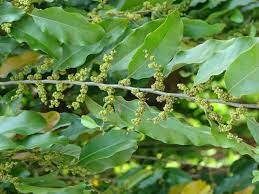Pichakari - African Tulip

Spathodea campanulata
Summary
Scientific Classification
Kingdom: Plantae
Division: Angiospermae
Class: Magnoliopsida Order: Lamiales
Family: Bignoniaceae Genus: Spathodea
Species: Spathodea campanulata
Scientific Name: Spathodea campanulata Beauv.
Common names
English: African Tulip tree, Squirt tree
Hindi: रगतूरा Rugtoora
Marathi: Pichakari, आकाश शेवगा Akash Shevga
Sanskrit Rudrapalash
Description
One of the world’s most spectacular flowering trees, African tulip tree is a large upright tree with glossy deep green pinnate leaves and glorious orange scarlet flowers. It may grow to 80 ft on an ideal site, but most specimens are much smaller. The tree has a stout, tapering, somewhat buttressed trunk covered in warty light gray bark. The lateral branches are short and thick. The 1-2 ft long opposite leaves, which emerge a bronzy color, are massed at the ends of the branches. They are composed of 5-19 deeply veined oval leaflets. The horn shaped velvety olive buds appear in upturned whorls at the branch tips. A few at a time, the buds of the lowest tier bend outward and open into big crinkled red orange tuliplike bells with red streaked gold throats, frilly yellow edges, and four brown-anthered stamens in the center. They are followed by 5-10 in green brown fingerlike pods pointing upwards and outwards above the foliage. Each of these pods contains about 500 tissue papery seeds. The tree flowers in spurts all through the growing season, but peak bloom is usually in the spring.
 Trees of Empress Botanical Garden - Project supported by
Trees of Empress Botanical Garden - Project supported by